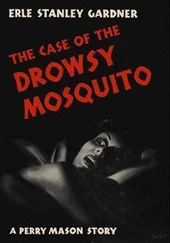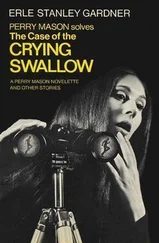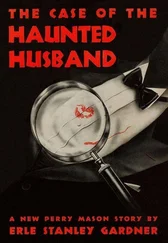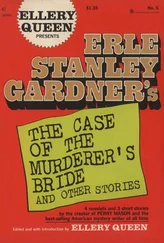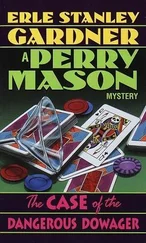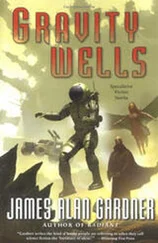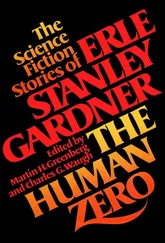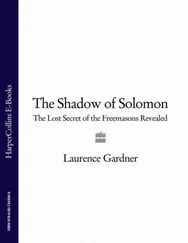Daniel Gardner - The Science of Fear
Здесь есть возможность читать онлайн «Daniel Gardner - The Science of Fear» весь текст электронной книги совершенно бесплатно (целиком полную версию без сокращений). В некоторых случаях можно слушать аудио, скачать через торрент в формате fb2 и присутствует краткое содержание. ISBN: , Издательство: Penguin Group (USA) Incorporated, Жанр: Психология, Политика, Прочая научная литература, на английском языке. Описание произведения, (предисловие) а так же отзывы посетителей доступны на портале библиотеки ЛибКат.
- Название:The Science of Fear
- Автор:
- Издательство:Penguin Group (USA) Incorporated
- Жанр:
- Год:неизвестен
- ISBN:9780525950622
- Рейтинг книги:3 / 5. Голосов: 1
-
Избранное:Добавить в избранное
- Отзывы:
-
Ваша оценка:
- 60
- 1
- 2
- 3
- 4
- 5
The Science of Fear: краткое содержание, описание и аннотация
Предлагаем к чтению аннотацию, описание, краткое содержание или предисловие (зависит от того, что написал сам автор книги «The Science of Fear»). Если вы не нашли необходимую информацию о книге — напишите в комментариях, мы постараемся отыскать её.
The Science of Fear — читать онлайн бесплатно полную книгу (весь текст) целиком
Ниже представлен текст книги, разбитый по страницам. Система сохранения места последней прочитанной страницы, позволяет с удобством читать онлайн бесплатно книгу «The Science of Fear», без необходимости каждый раз заново искать на чём Вы остановились. Поставьте закладку, и сможете в любой момент перейти на страницу, на которой закончили чтение.
Интервал:
Закладка:
In a classic series of studies in the early 1970s, Baruch Fischhoff gave Israeli university students detailed descriptions of events leading up to an 1814 war between Great Britain and the Gurkas of Nepal. The description also included military factors that weighed on the outcome of the conflict, such as the small number of Gurka soldiers and the rough terrain the British weren’t used to. One thing missing was the war’s outcome. Instead, one group of students was told there were four possible results—British victory, Gurka victory, stalemate with no peace settlement, and stalemate with settlement. Now, they were asked, how likely was it that the war would end in each of these outcomes?
A second group of students was divided into four sections. Each section was given the same list of four outcomes. But the first section was told that the war actually did end in a British victory (which it did, incidentally). The second section was told it concluded in a Gurka victory. The third section was told it ended in a stalemate with no settlement, and the fourth was told it was a stalemate with a settlement. Now, they were asked, how likely were each of the four outcomes?
Knowing what happened—or at least believing you know—changed everything. Students who weren’t told how the war ended gave an average rating of 33.8 percent to the probability of a British victory. Among students who were told the war ended in a British victory, the chance of that happening was judged to be 57.2 percent. So knowing how the war ended caused people’s estimate of the probability to jump from one-third to better than one-half.
Fischhoff ran three other versions of the experiment and consistently got the same results. Then he did the whole thing over again, but with one change: Those who were told the war’s outcome were also asked not to let their knowledge of the outcome influence their judgment. It still did.
Fischhoff came up with an ingenious twist on his research in 1972, after Richard Nixon announced he would make an historic to China and the U.S.S.R. Prior to the trip, students were told that certain things could happen during Nixon’s travels: He may meet personally with Mao; he may visit Lenin’s tomb; and so on. They were asked how likely each of those events was. Fischhoff filed that information away and waited. Months after Nixon’s trip, he went back to each student and asked them about each event. Do you think it occurred? And do you recall how likely you thought it was to occur? “Results showed that subjects remembered having given higher probabilities than they actually had to events believed to have occurred,” Fischhoff wrote, “and lower probabilities to events that hadn’t occurred.”
The effect of hindsight bias is to drain the uncertainty out of history. Not only do we know what happened in the past, we feel that what happened was likely to happen. What’s more, we think it was predictable . In fact, we knew it all along.
So here we are, standing in the present, peering into the frighteningly uncertain future and imagining all the awful things that could possibly happen. And when we look back? It looks so much more settled, so much more predictable. It doesn’t look anything like this . Oh yes, these are very scary times.
This is all an illusion. Consider the daughter that Thomas Friedman dropped off at college in 2003—into a world “so much more dangerous than the world she was born into.” That daughter was born in 1985. Was the world of 2003 “so much more dangerous” than the world of 1985? Thanks to the foibles of the human mind, it can easily seem that way.
But in 1985, the Soviet Union and the United States possessed sufficient nuclear weaponry to kill half the human race and reduce the rest to scavengers scuttling amid the ruins. These weapons were pointed at each other. They could be launched at any moment. Annihilation would come with nothing more than a few minutes’ notice and, in 1985, it increasingly looked like it would. The Cold War had been getting hotter since the 1979 Soviet invasion of Afghanistan and the 1980 election of Ronald Reagan. Mikhail Gorbachev became leader of the Soviet Union in 1985, and we know now that Gorbachev and Reagan later met and steadily reduced tensions, that the Cold War ended peacefully, and the Soviet Union dissolved within a few years. But in 1985, that was all in the black void of the future. In 1985, what actually happened would have seemed wildly improbable—which is why almost no one predicted anything like it. But nuclear war? That looked terrifyingly likely.
In 1983, The Day After, a nightmarish look at life in small-town America before and after nuclear attack, became the most-talked-about TV drama of the era. In 1984, no fewer than seven novels featuring nuclear war were published. The fear was real and intense. It filled the streets of Europe and America with millions of protestors and filled countless heads with nightmares. “Suppose I survive,” wrote British novelist Martin Amis. “Suppose my eyes aren’t pouring down my face, suppose I am untouched by the hurricane of secondary missiles that all mortar, metal, and glass has abruptly become: suppose all this. I shall be obliged (and it’s the last thing I feel like doing) to retrace that long mile home, through the firestorm, the remains of the thousand-mile-an-hour winds, the warped atoms, the groveling dead. Then—God willing, if I still have the strength, and, of course, if they are still alive—I must find my wife and children and I must kill them.”
And if global incineration weren’t enough to worry about, 1985 also saw explosive awareness about the rapid spread of a deadly new virus. There was no treatment for AIDS. Get it and you were certain to die a slow, wasting death. And there was a good chance you would get it because a breakthrough into the heterosexual population was inevitable. “AIDS has both sexes running scared,” Oprah Winfrey told her audience in 1987. “Research studies now project that one in five heterosexuals could be dead from AIDS at the end of the next three years. That’s by 1990. One in five.” Surgeon General C. Everett Koop called it “the biggest threat to health this nation has ever faced.” A member of the president’s commission on AIDS went one step further, declaring the disease to be “the greatest threat to society, as we know it, ever faced by civilization—more serious than the plagues of past centuries.” We know now that it didn’t work out that way, but at the time there were good reasons to think it would. And to be very, very afraid.
So was the world of 1985 so much safer? Thomas Friedman thought so in 2003, but I think he was the victim of a cognitive illusion. He knew the Cold War ended peacefully and AIDS did not sweep through the United States like the Black Death. That knowledge made those outcomes appear far more likely than they did at the time. And it made him feel that the Thomas Friedman of 1985 was much more confident of those outcomes than the Thomas Friedman of 1985 really was.
I don’t mean to knock Friedman. The point is simply that even a renowned commentator on global affairs is vulnerable to this illusion. And he’s not alone. In a 2005 book called Expert Political Judgment , Philip Tetlock, a University of California psychologist, presented the results of a twenty-year project that involved Tetlock tracking the predictions of 284 political scientists, economists, journalists, and others whose work involved “commenting or offering advice on political or economic trends.” In all, Tetlock checked the accuracy of 82,361 predictions and found the experts’ record was so poor they would have been beaten by random guesses. Tetlock also found, just as Baruch Fischhoff had earlier, that when experts were asked after the fact to recall their predictions and how confident they were, they remembered themselves being more accurate and more certain than they actually were. (Unlike the Israeli students Fischhoff surveyed, however, experts often got defensive when they were told this.)
Читать дальшеИнтервал:
Закладка:
Похожие книги на «The Science of Fear»
Представляем Вашему вниманию похожие книги на «The Science of Fear» списком для выбора. Мы отобрали схожую по названию и смыслу литературу в надежде предоставить читателям больше вариантов отыскать новые, интересные, ещё непрочитанные произведения.
Обсуждение, отзывы о книге «The Science of Fear» и просто собственные мнения читателей. Оставьте ваши комментарии, напишите, что Вы думаете о произведении, его смысле или главных героях. Укажите что конкретно понравилось, а что нет, и почему Вы так считаете.

